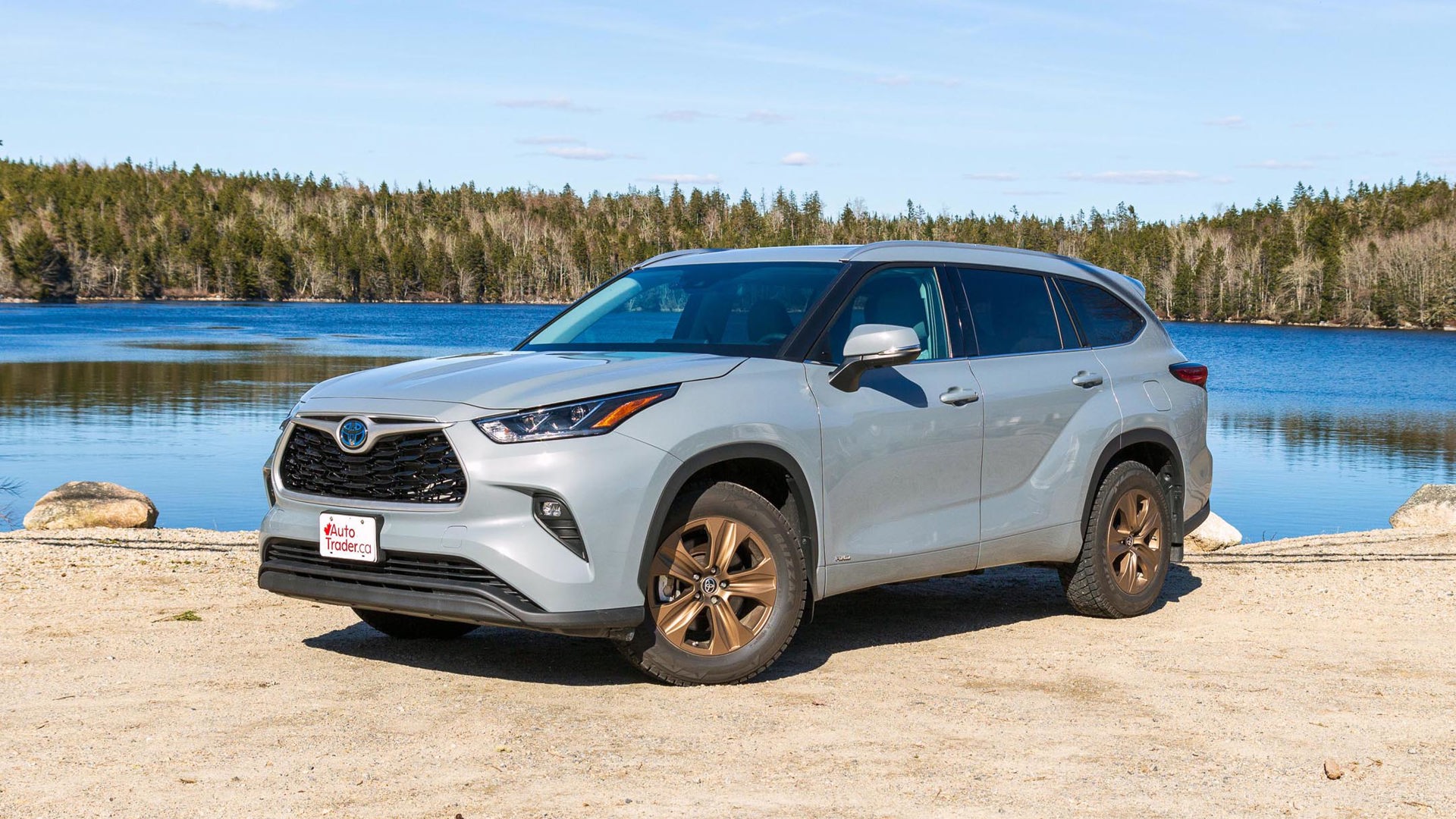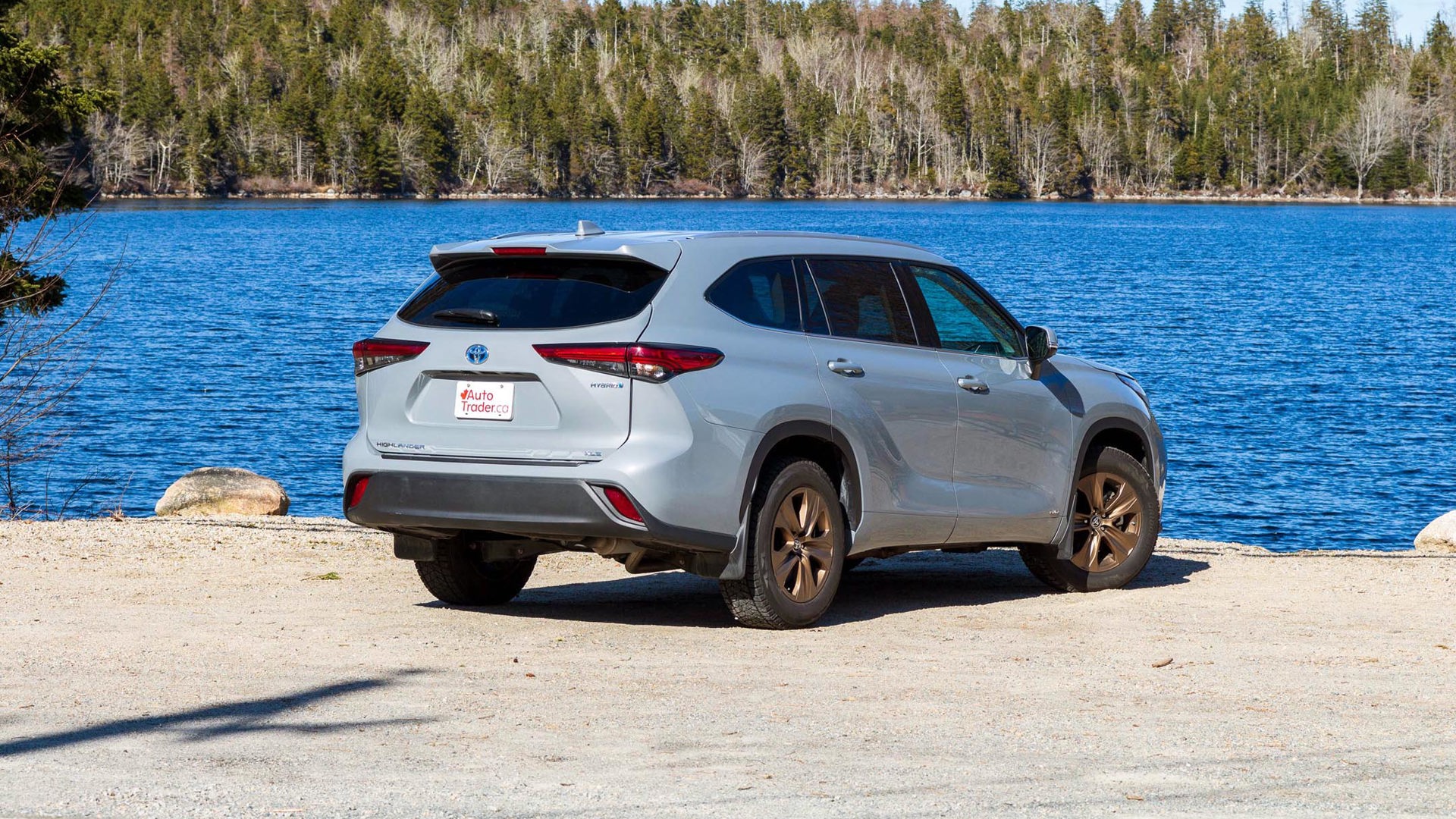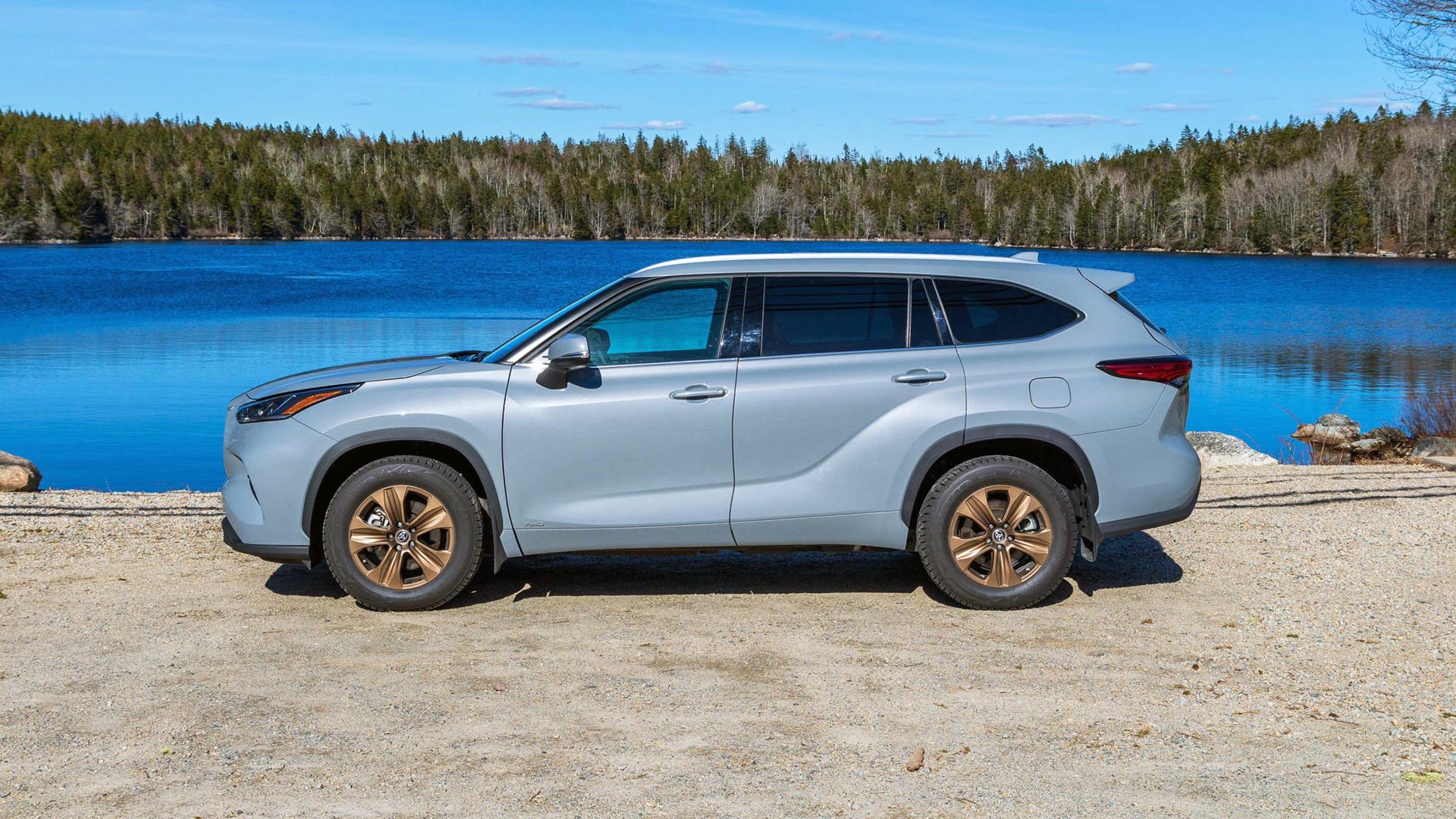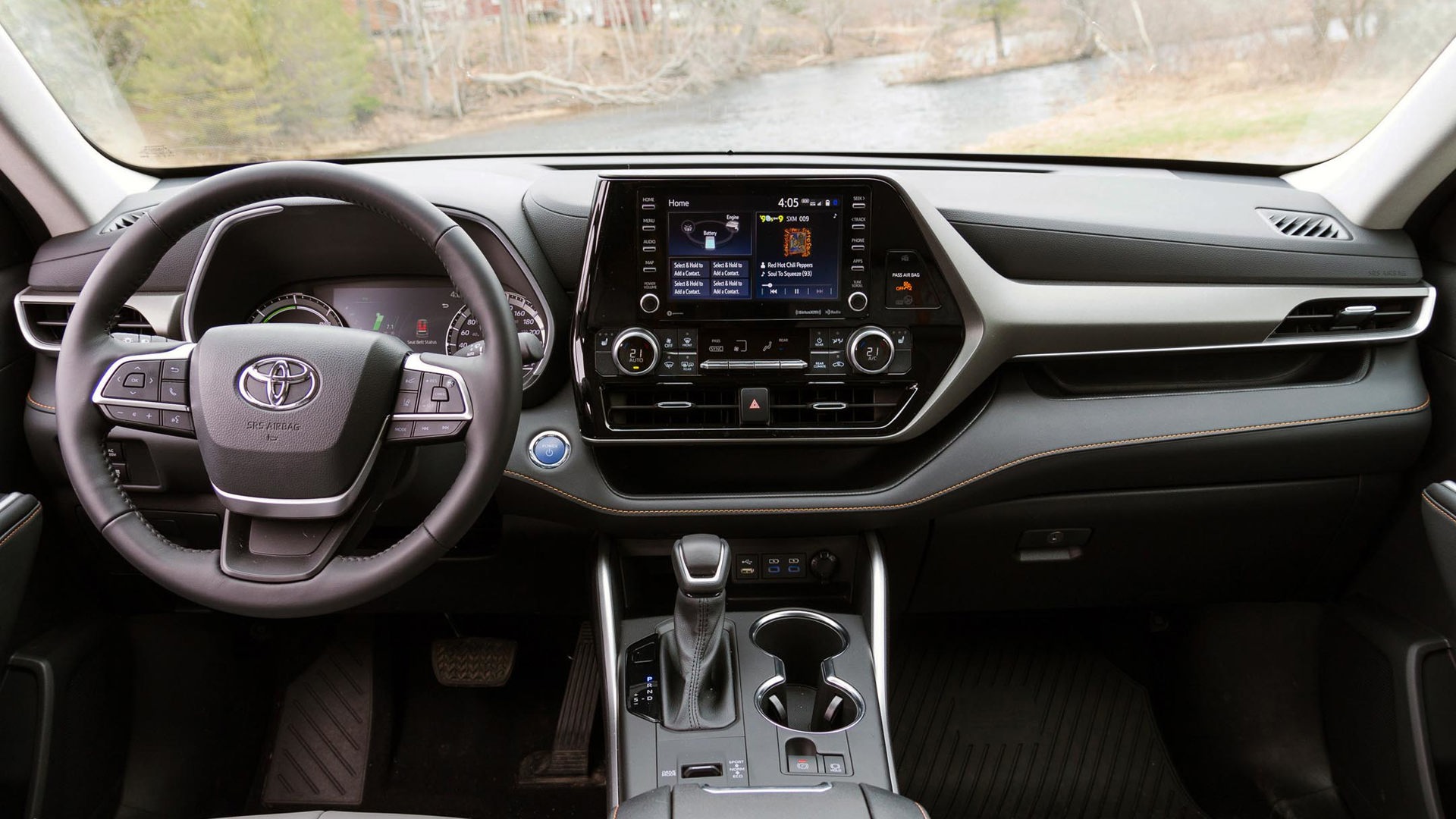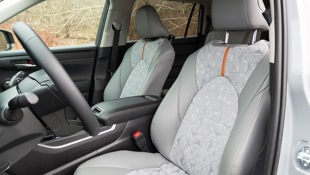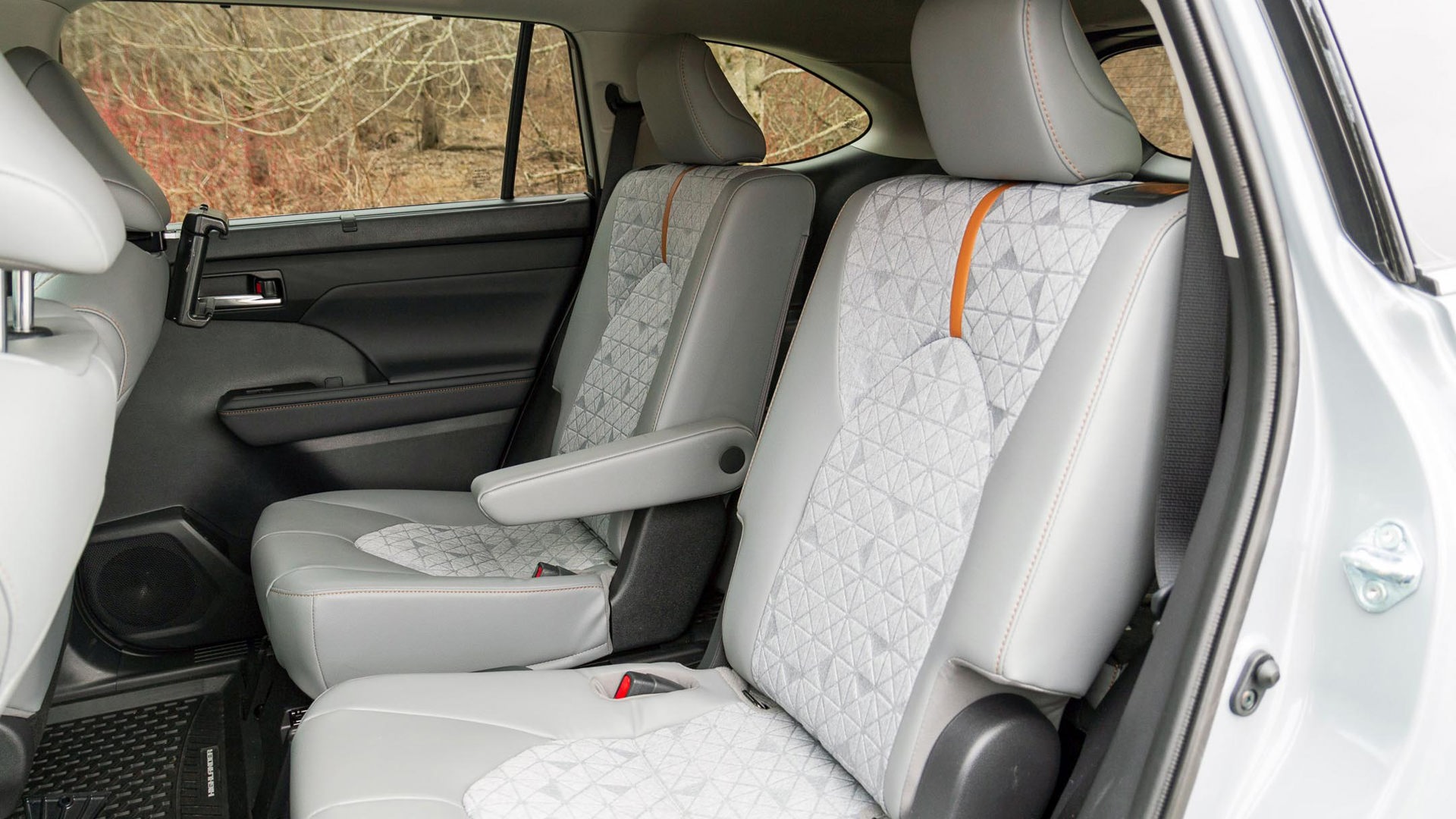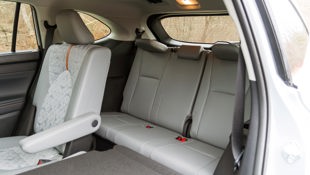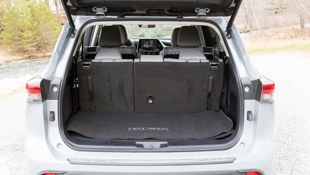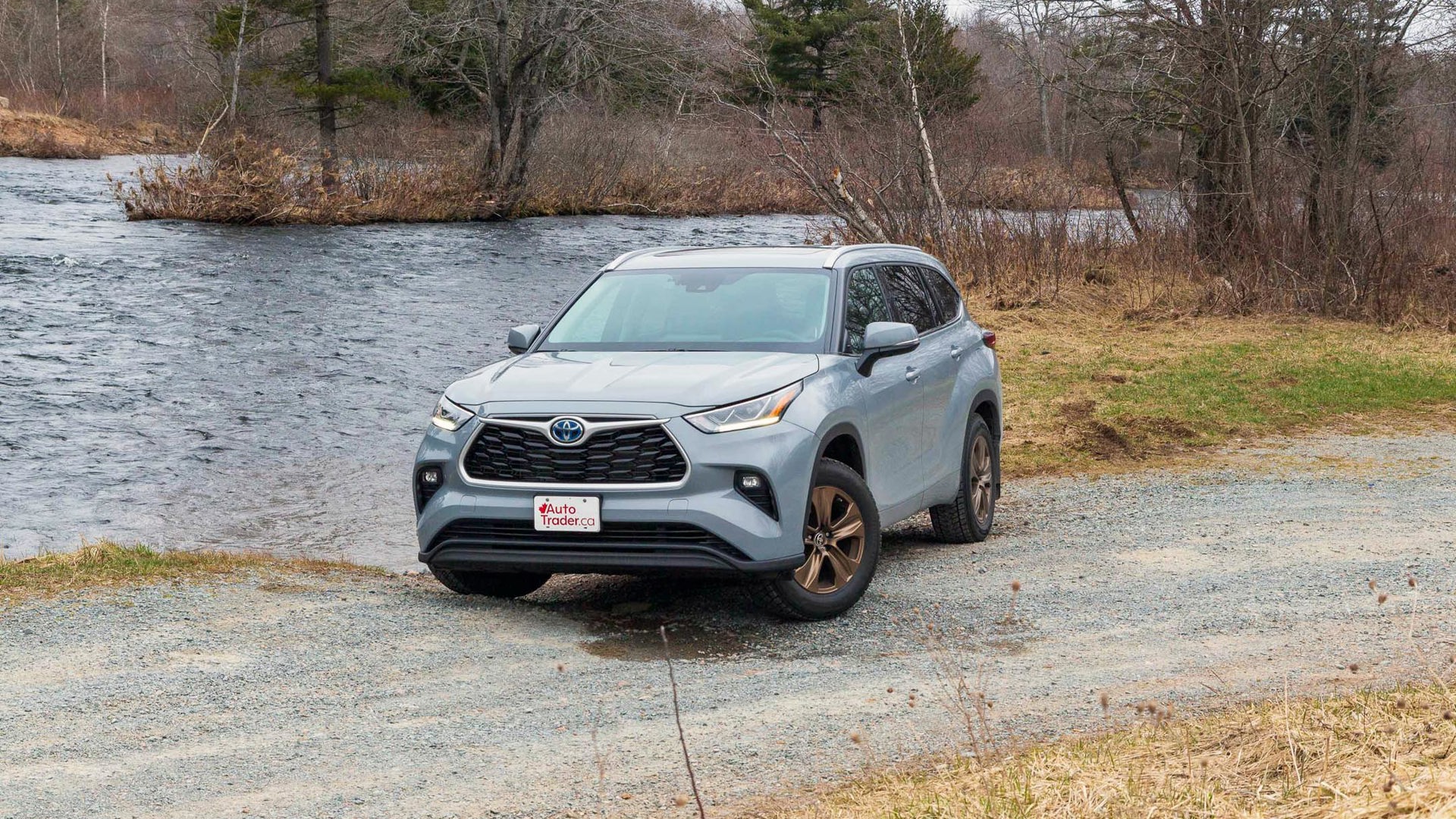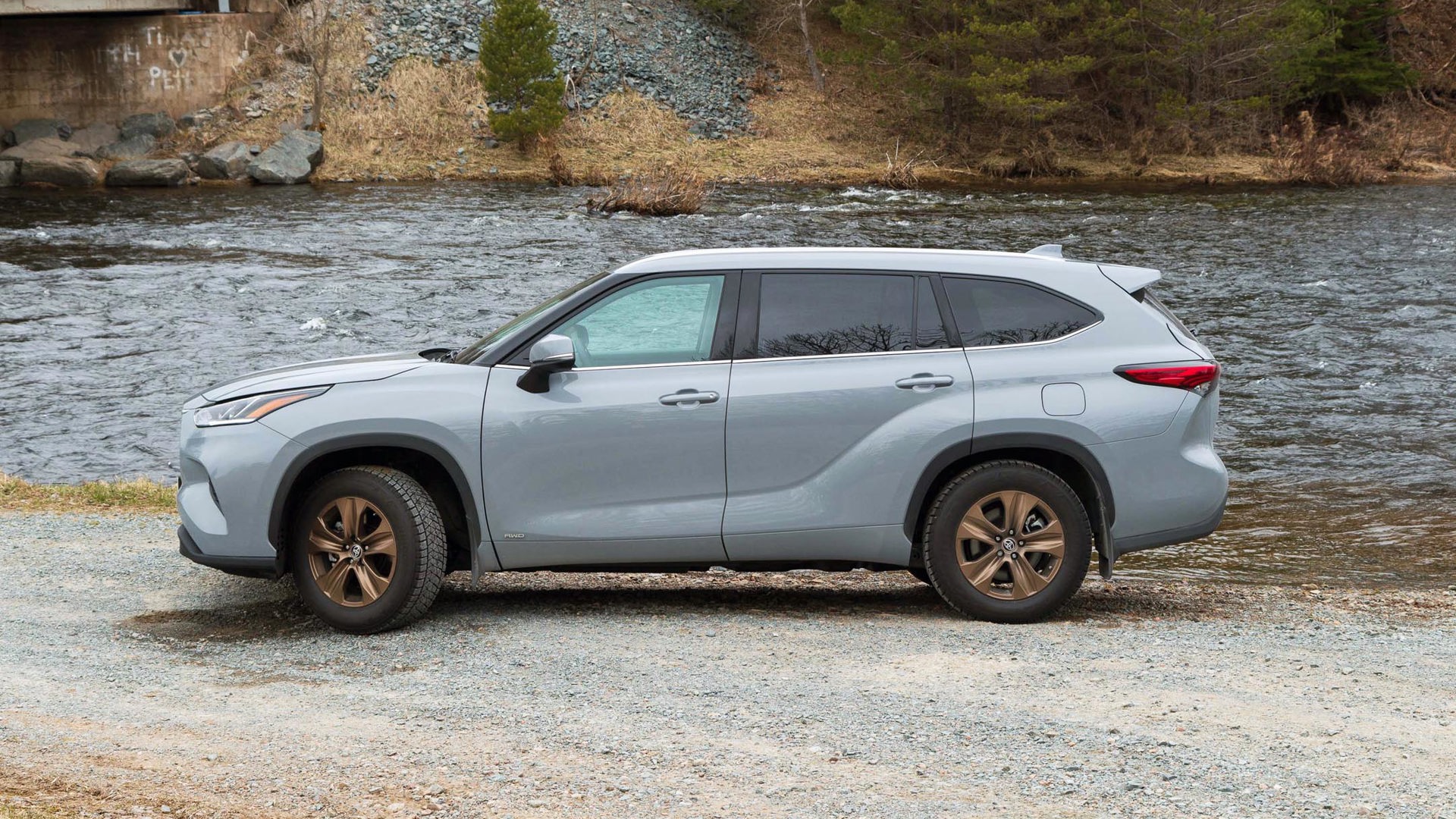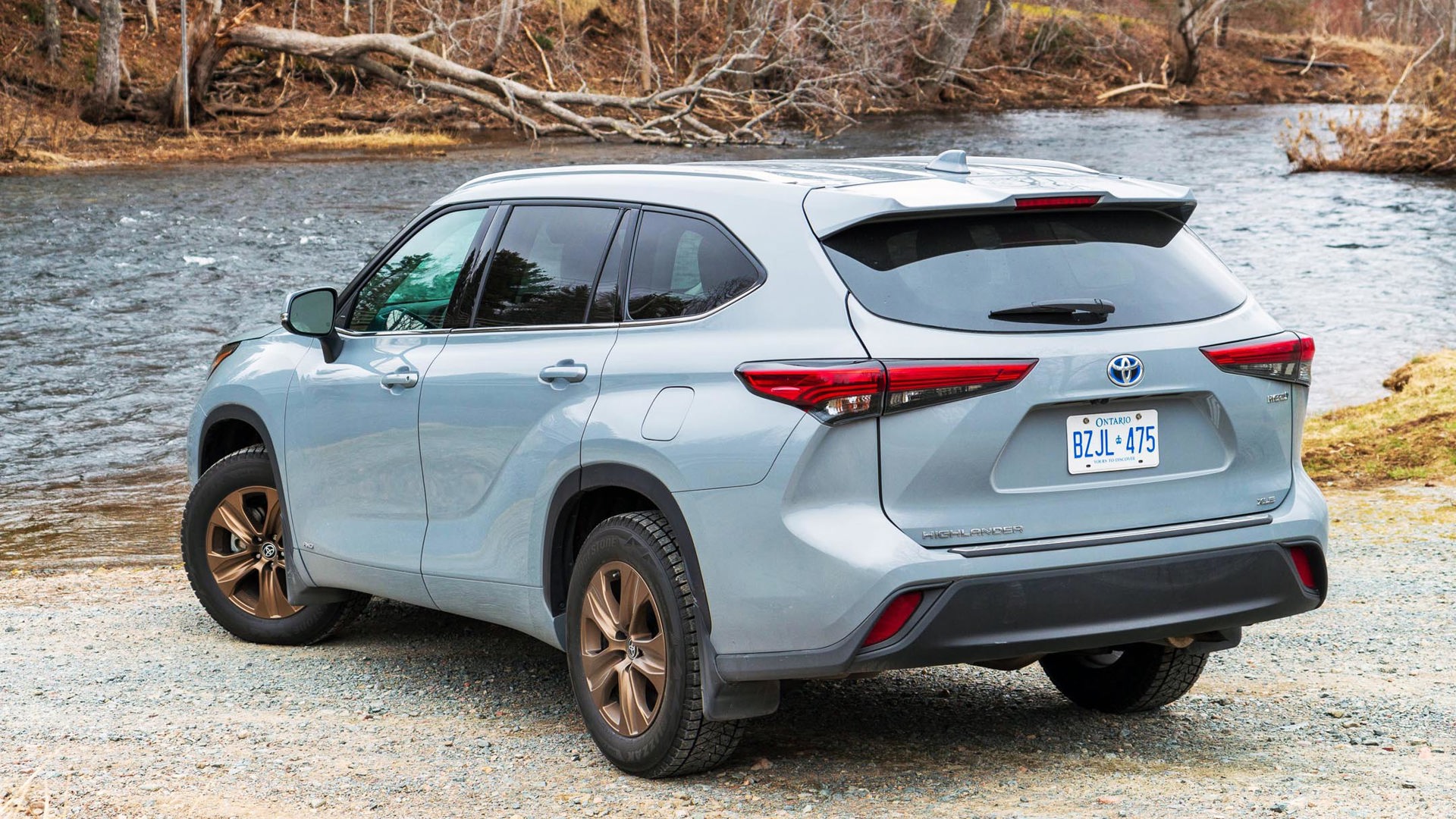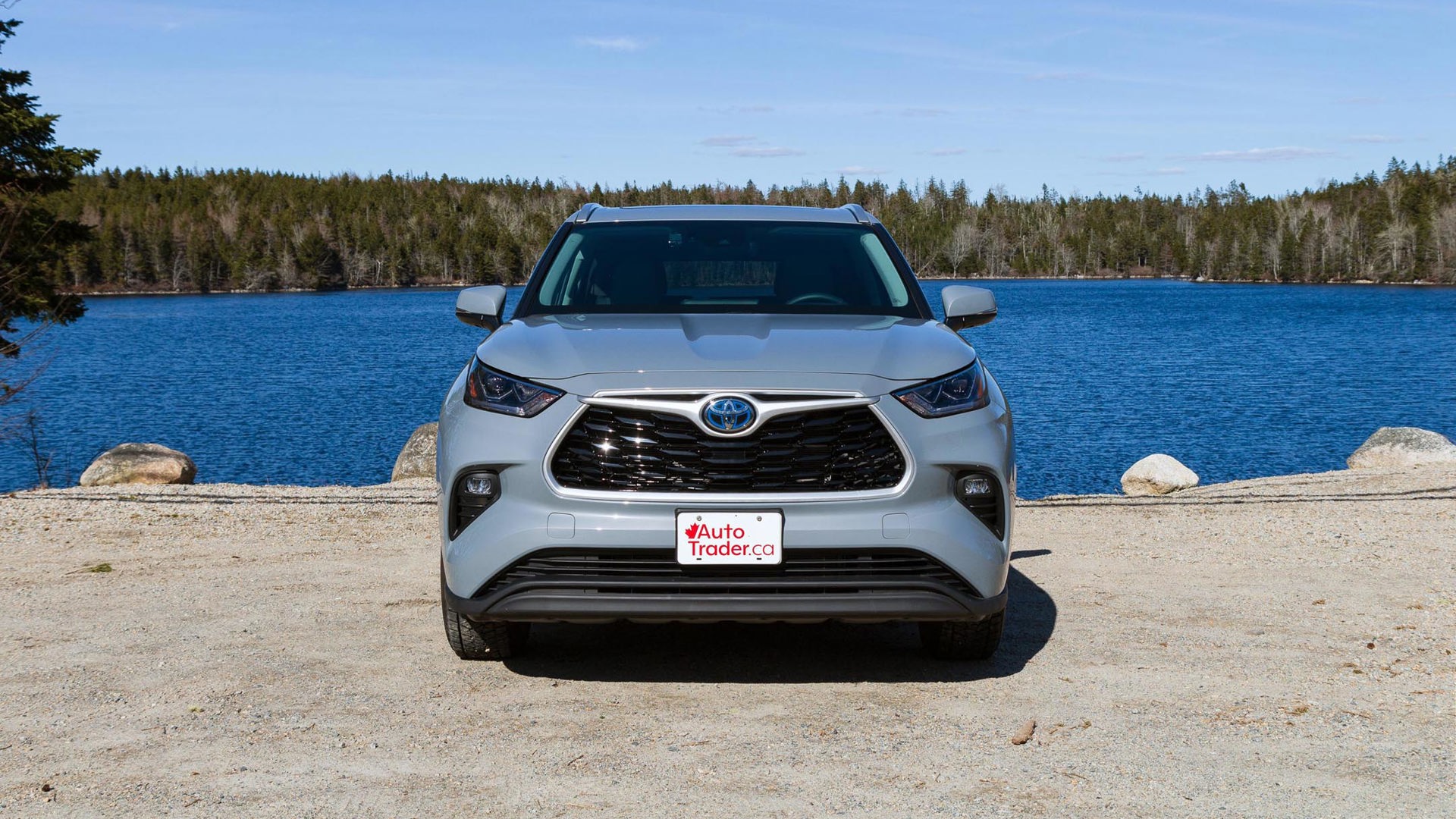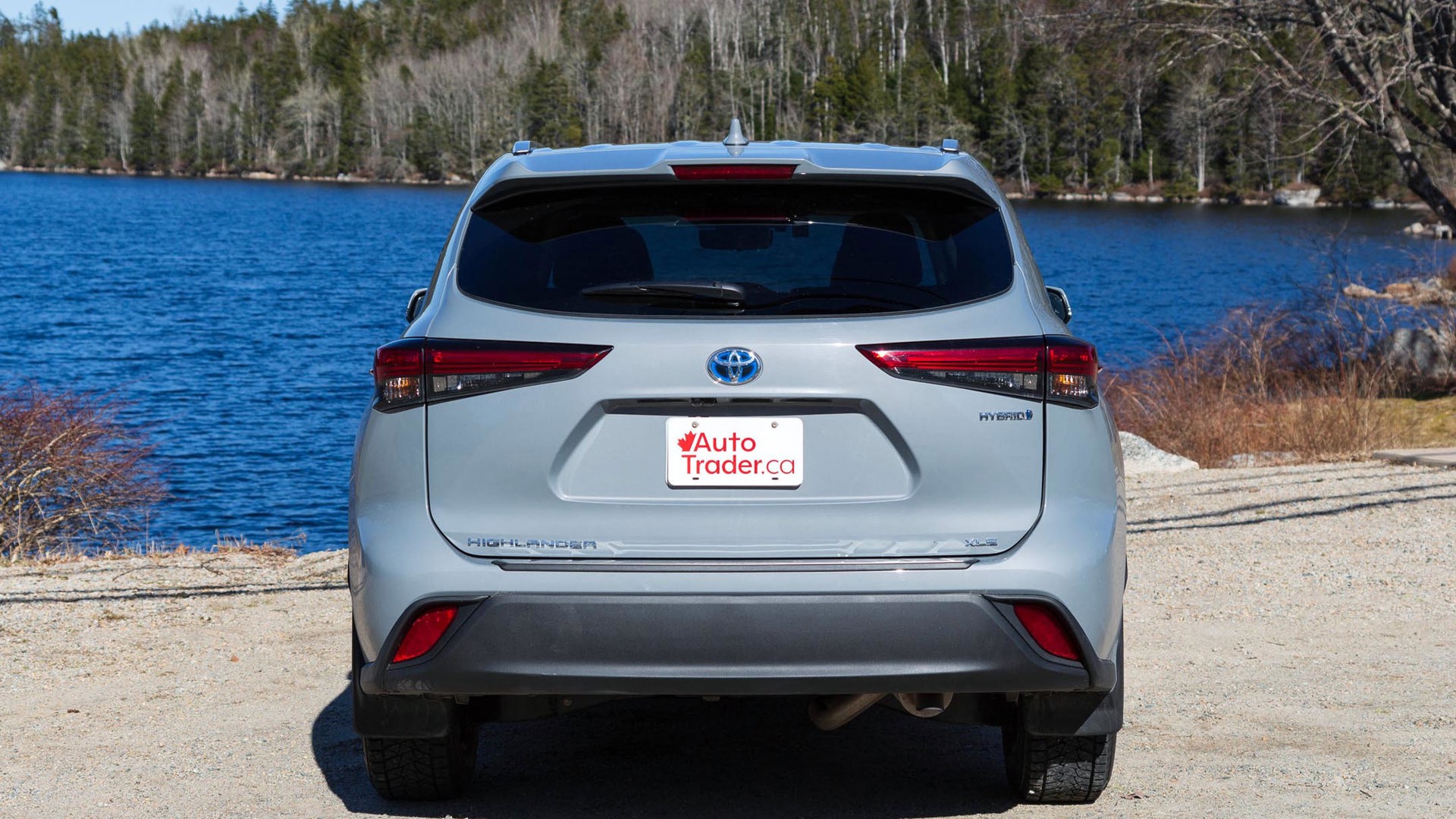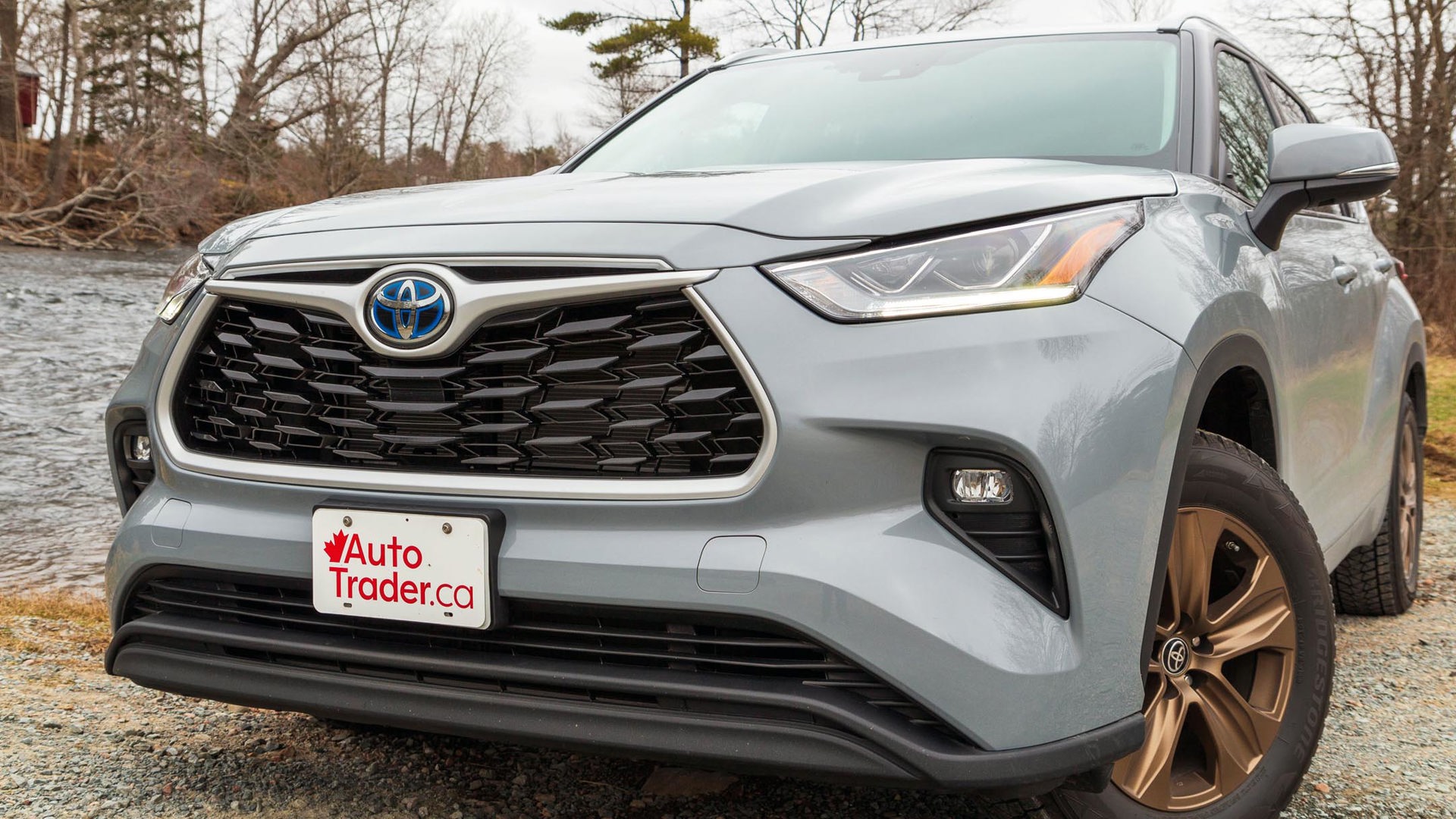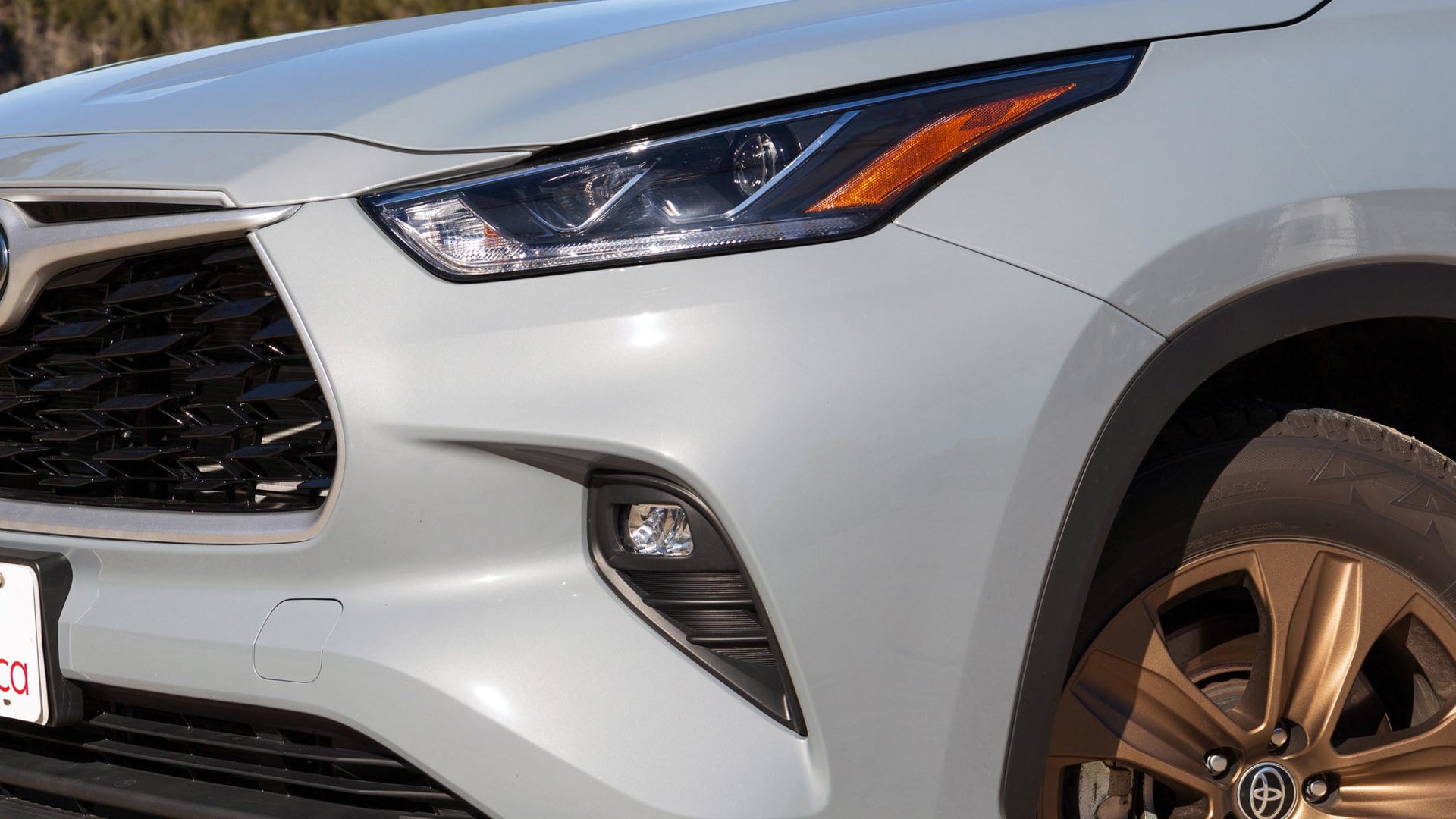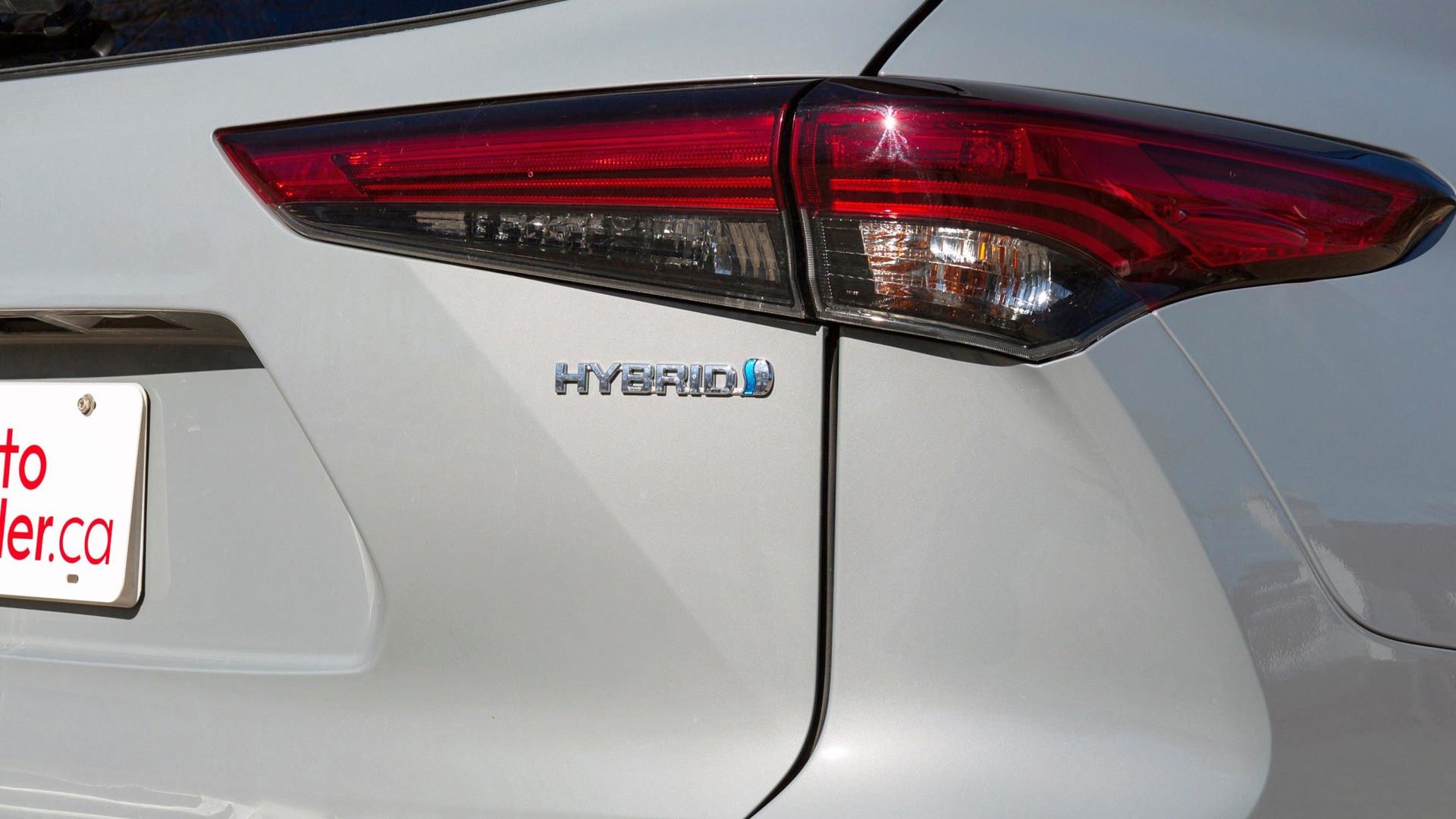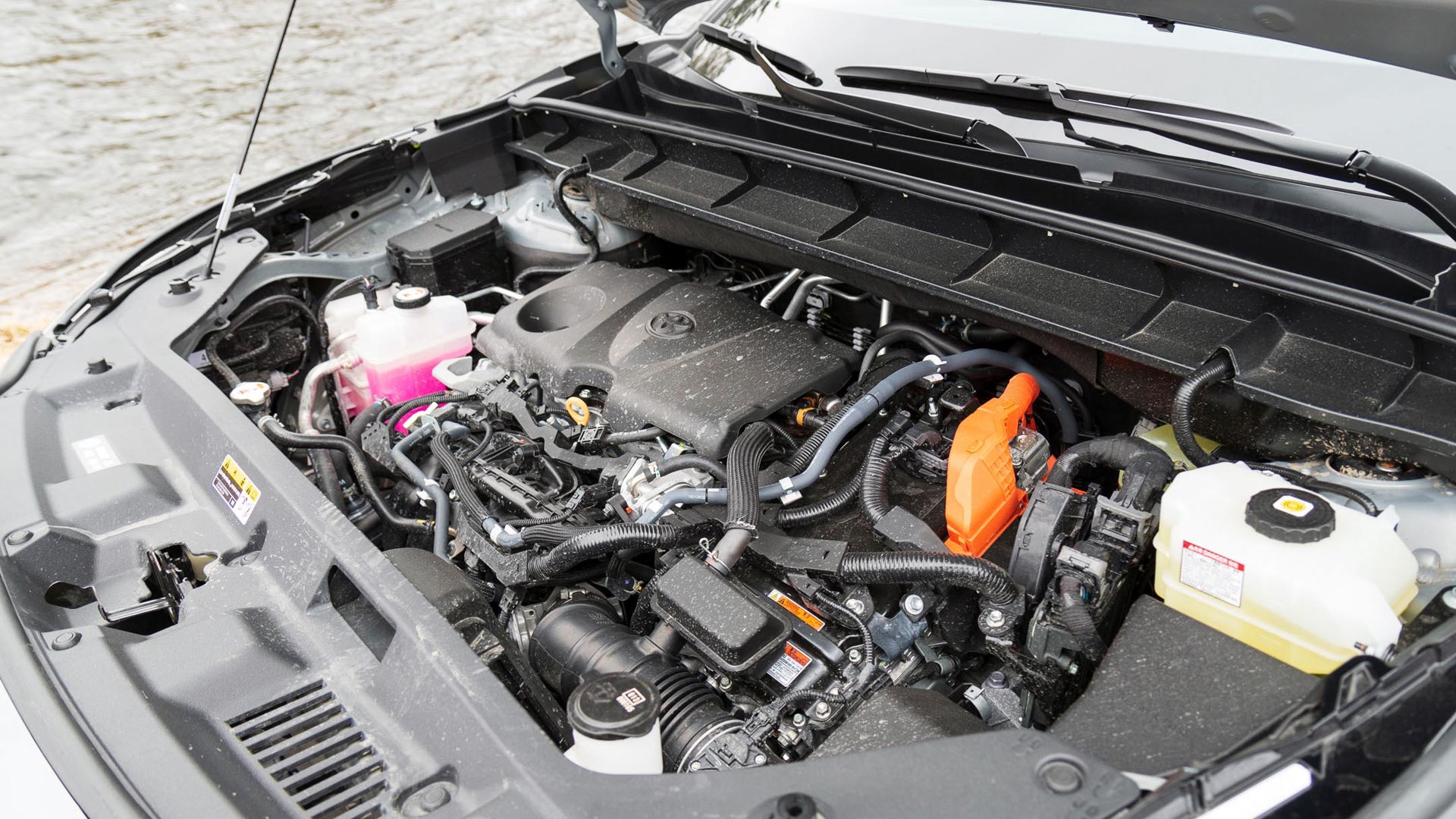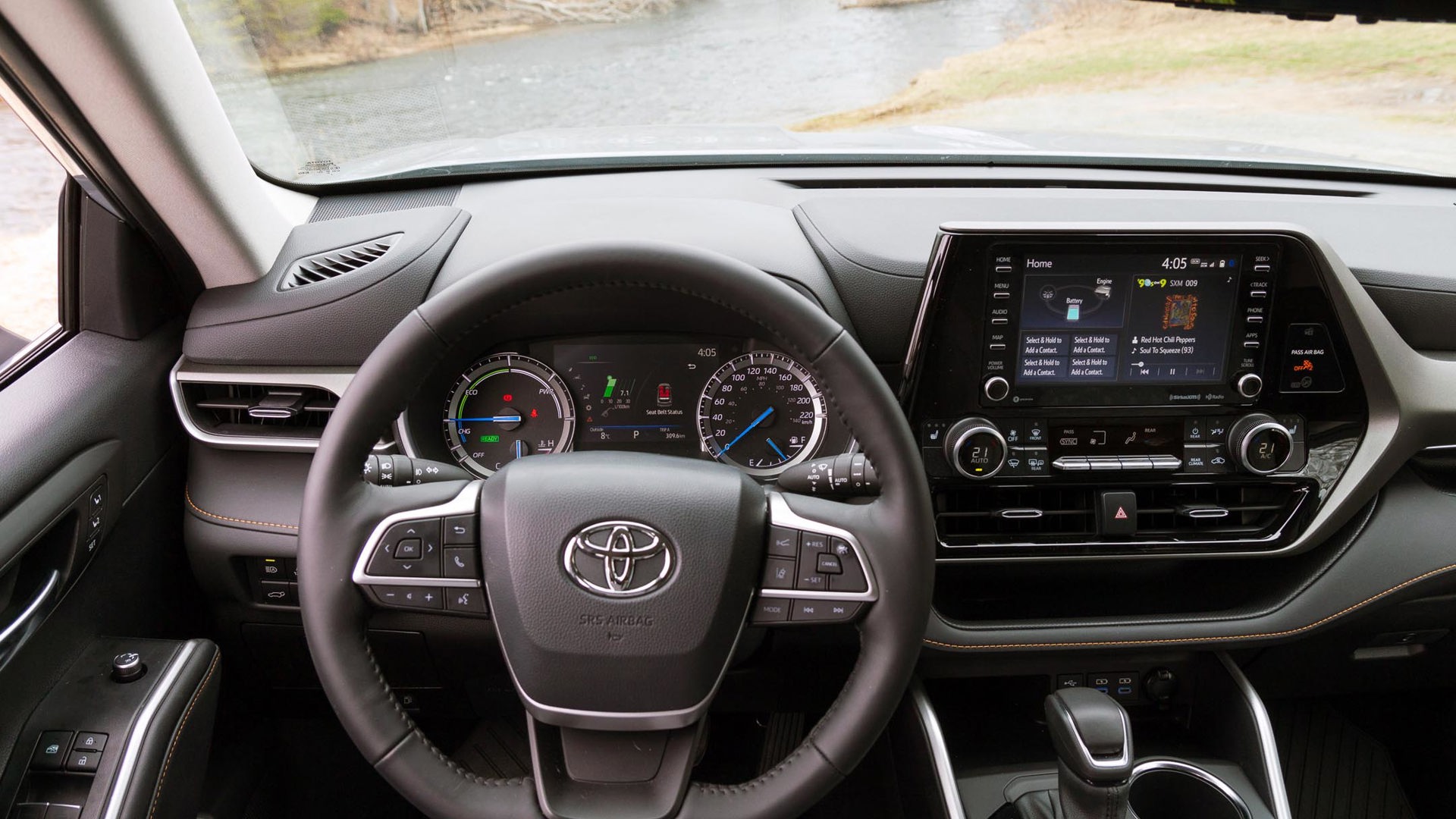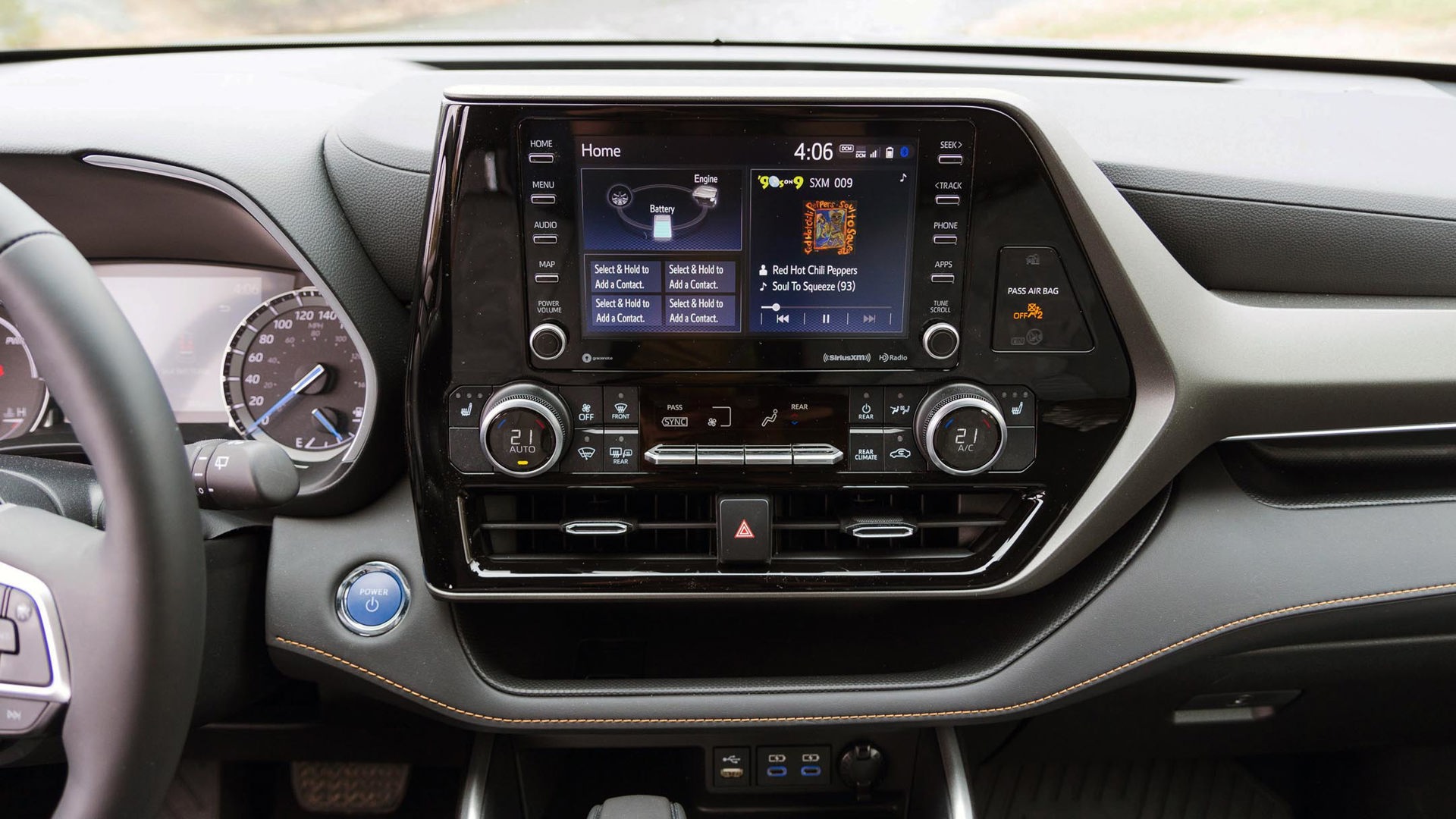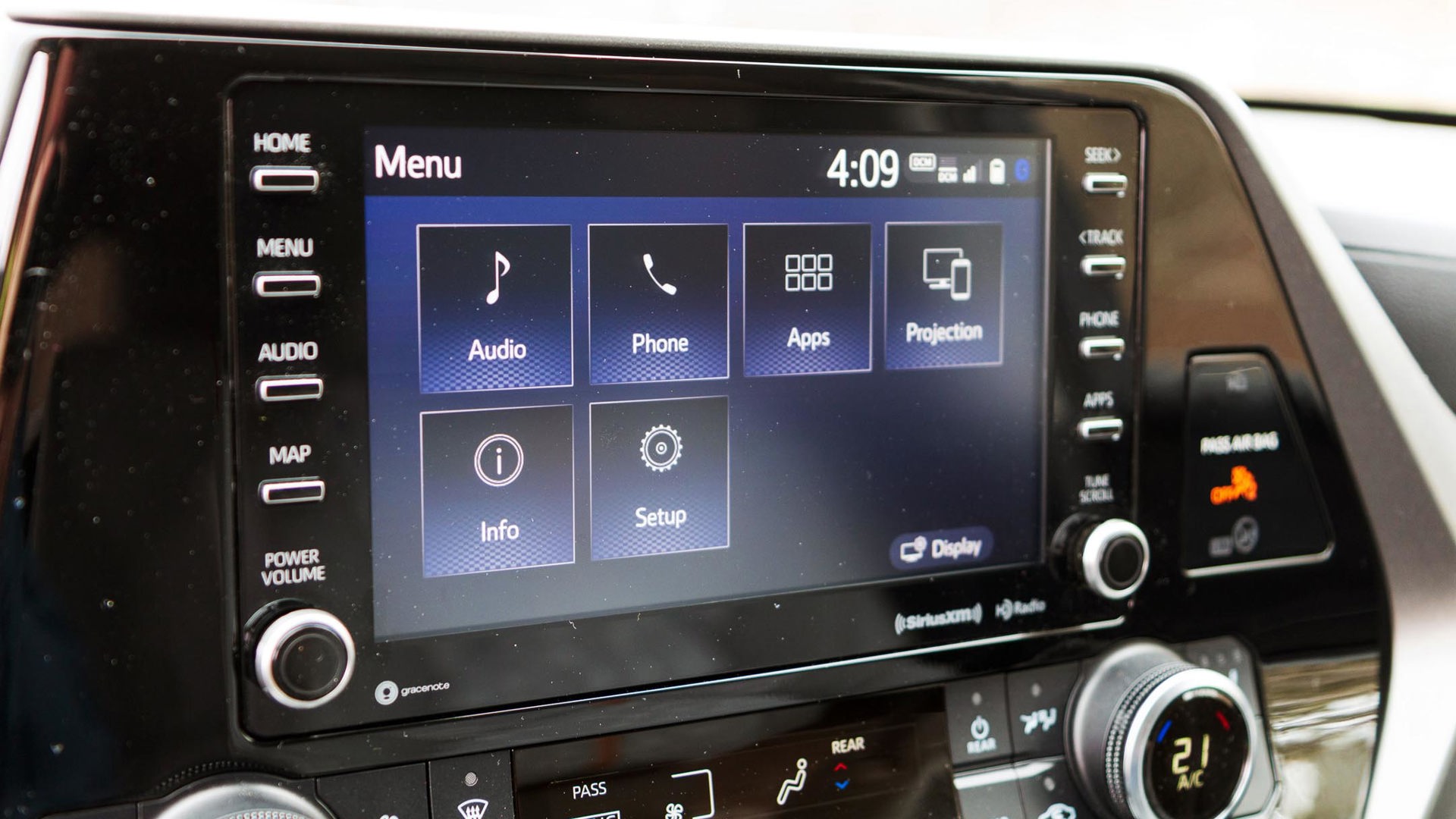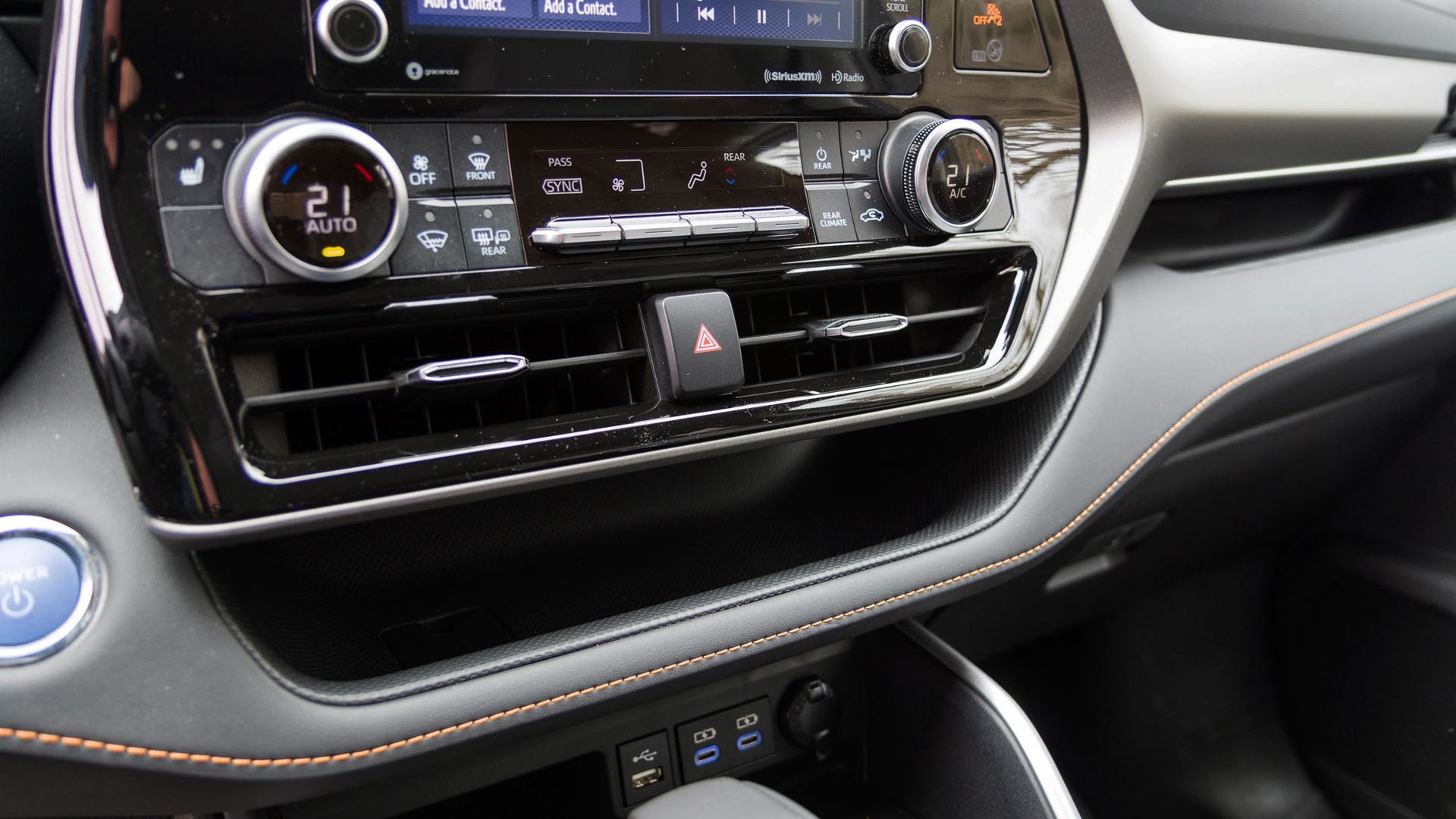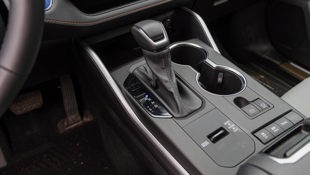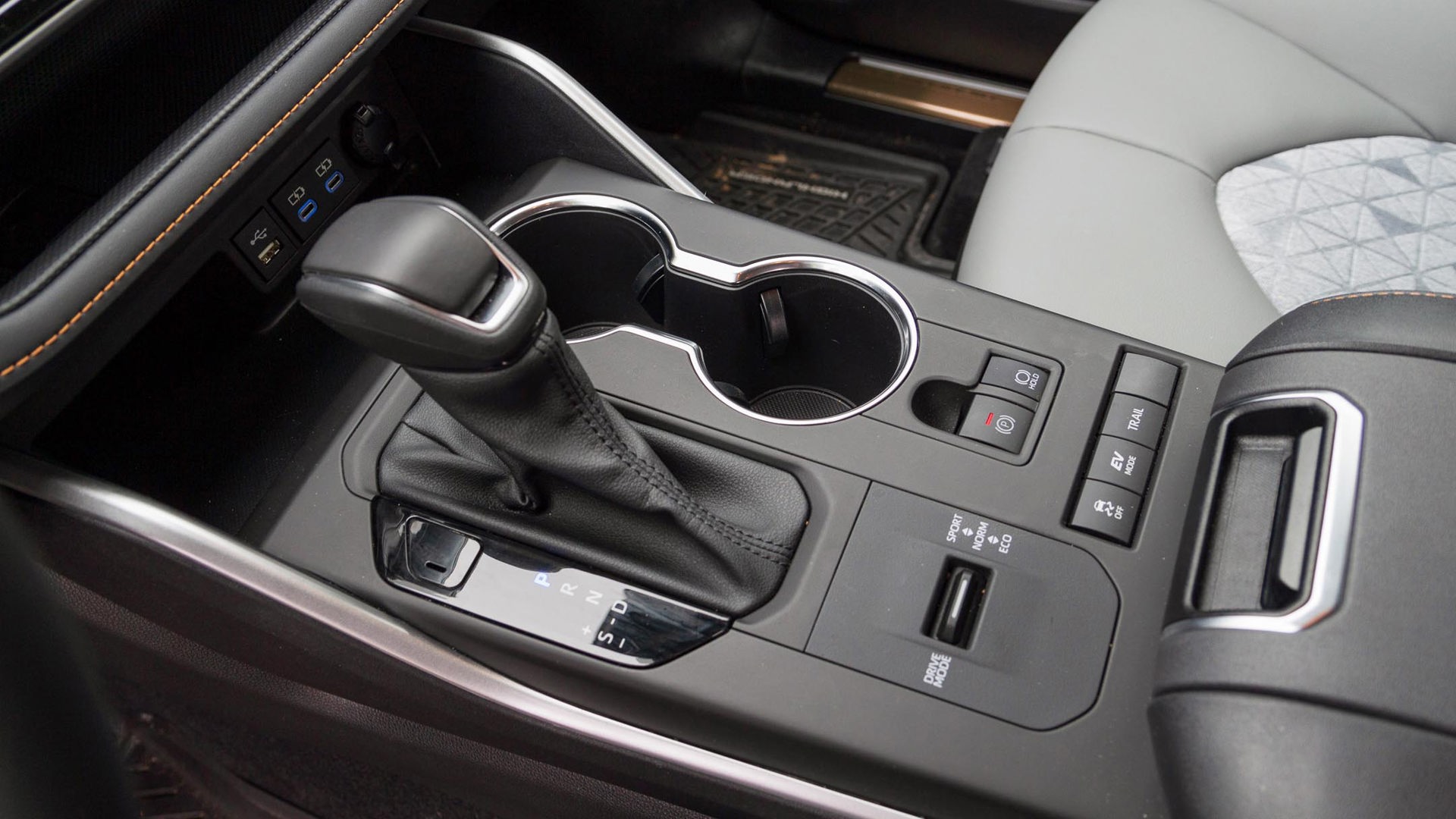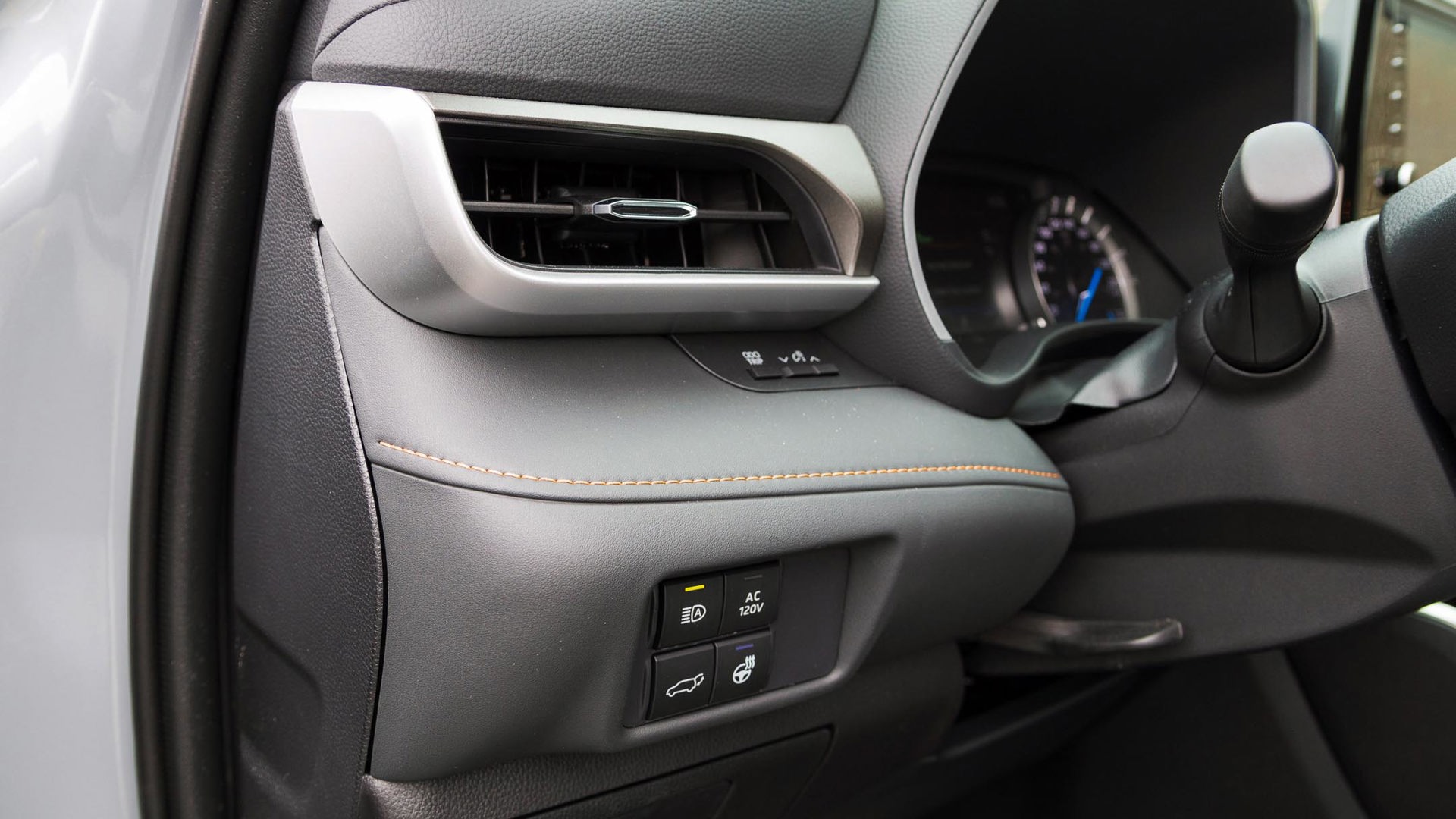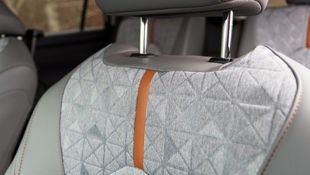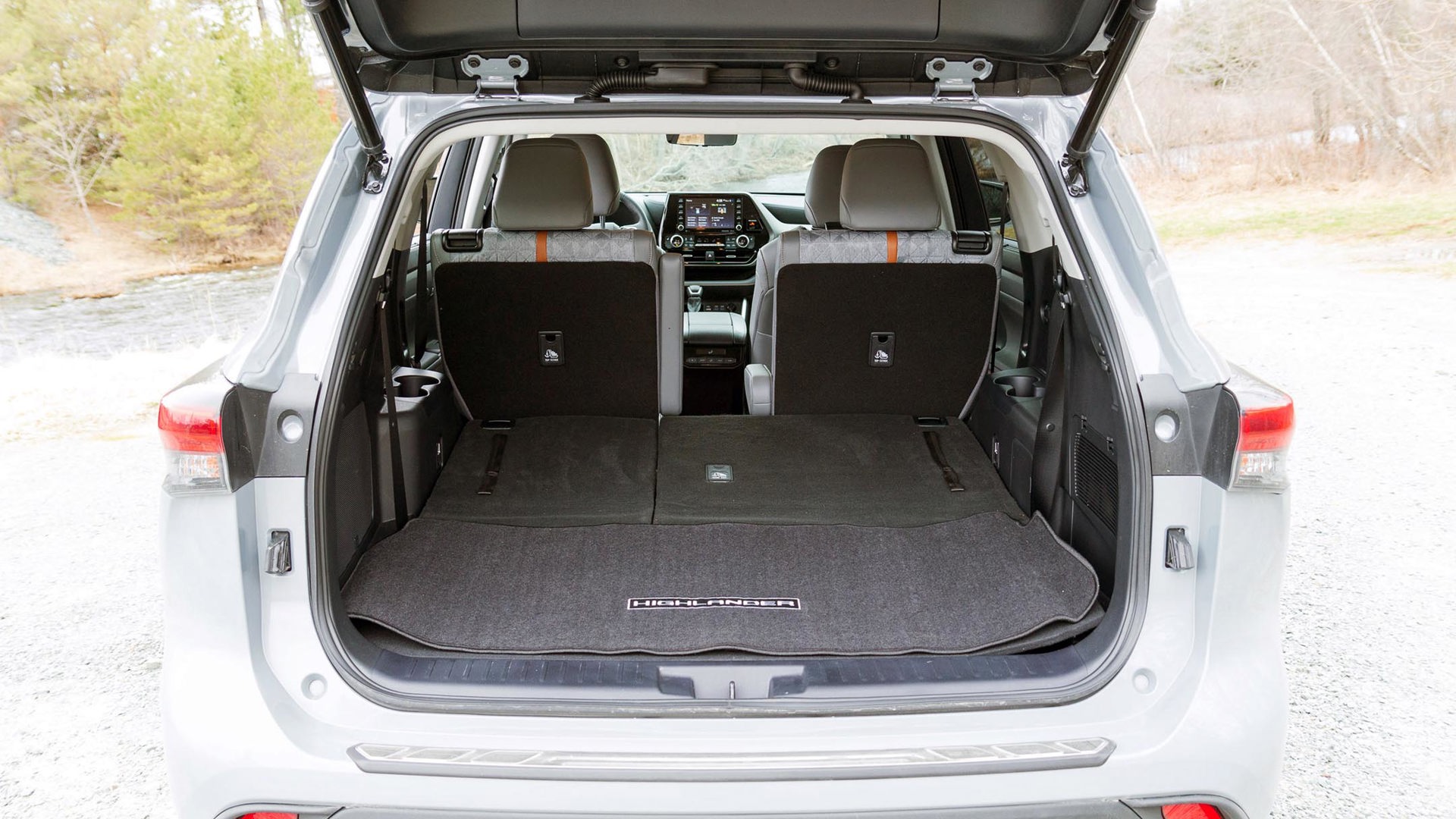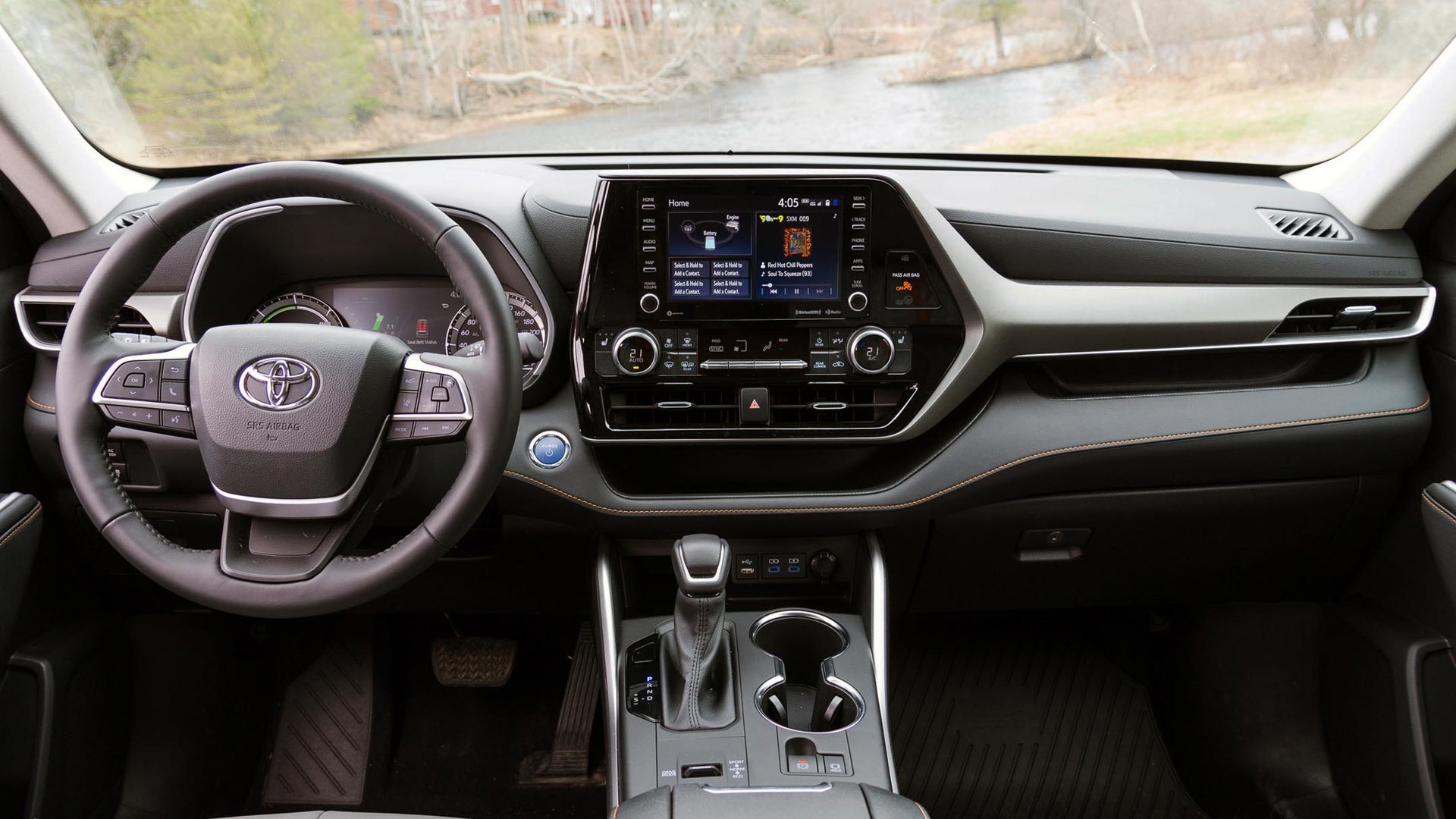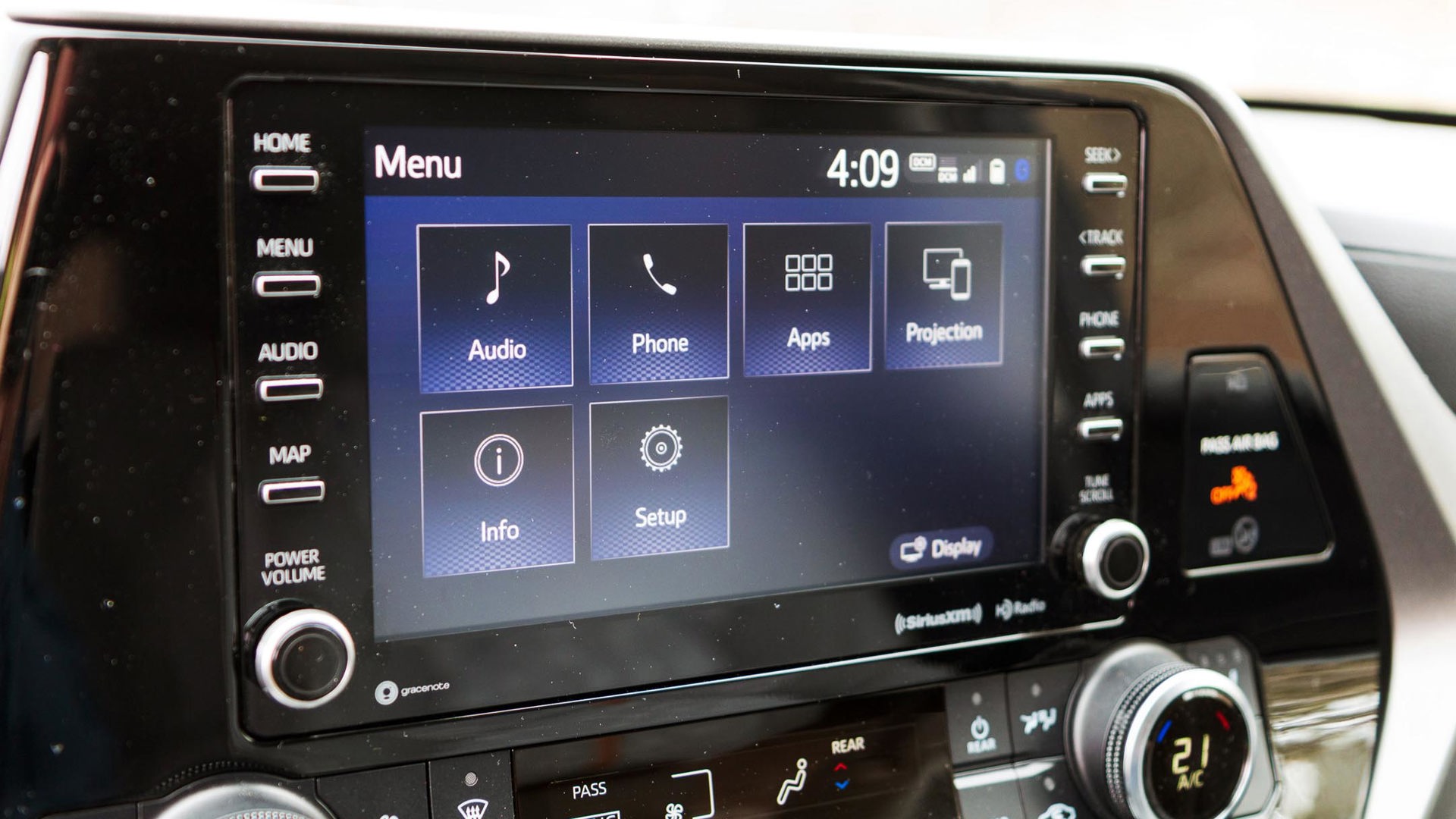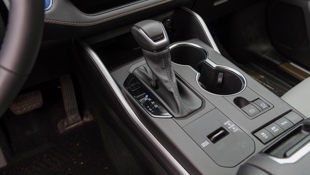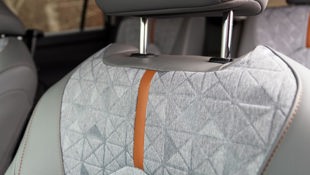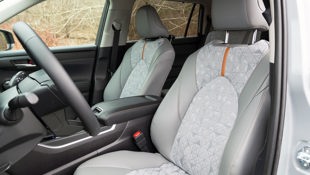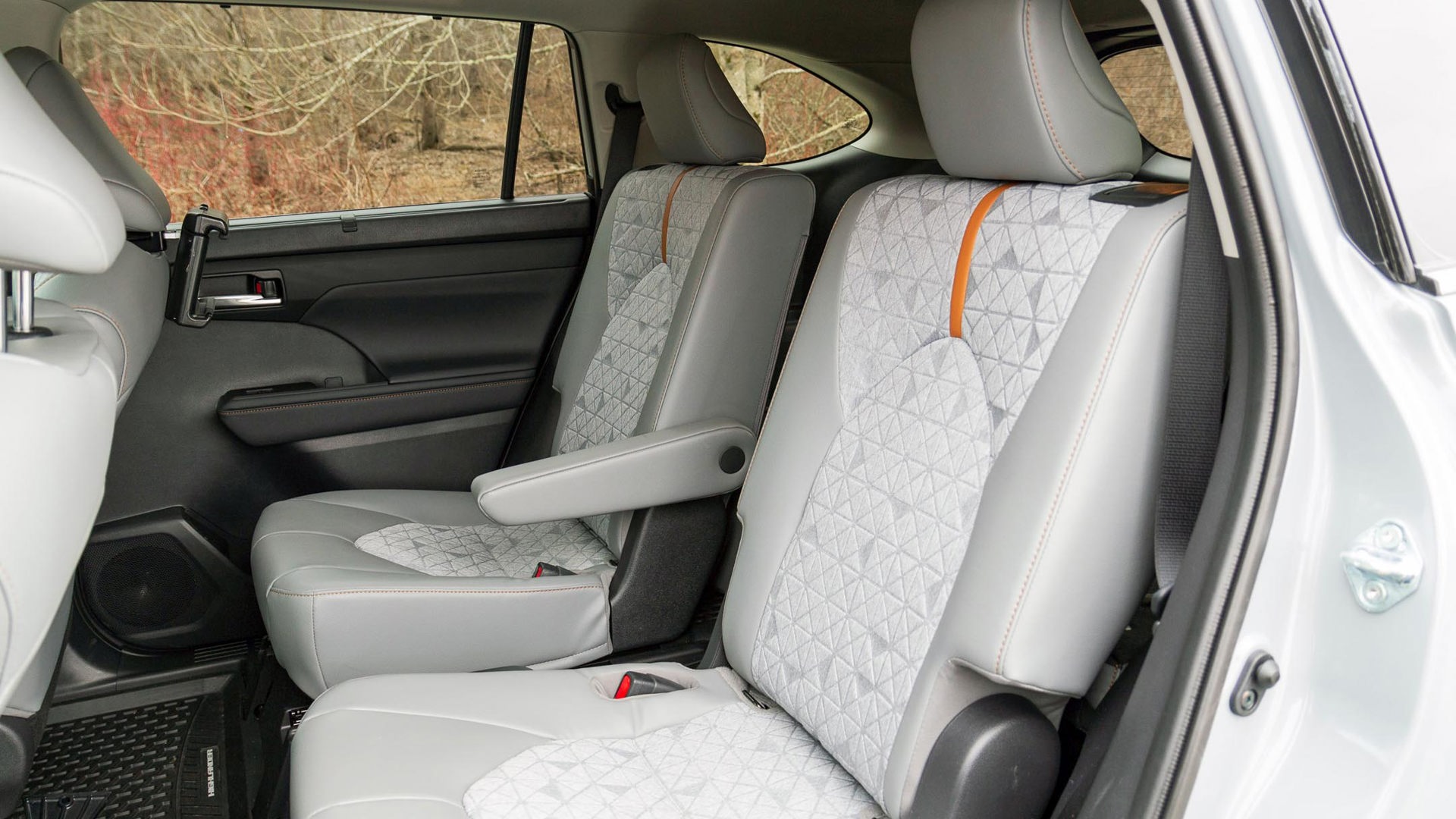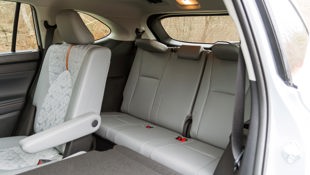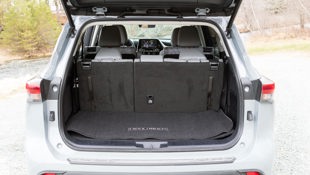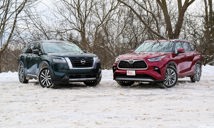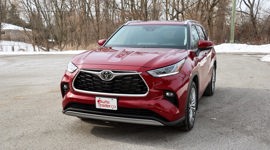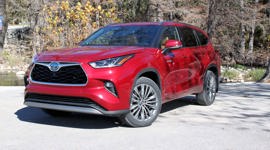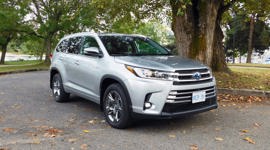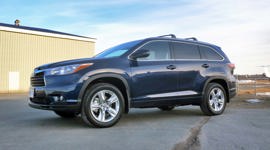 AutoTrader SCORE
AutoTrader SCORE
-
STYLING7/10
-
Safety8/10
-
PRACTICALITY8/10
-
USER-FRIENDLINESS7/10
-
FEATURES7/10
-
POWER7/10
-
COMFORT7/10
-
DRIVING FEEL7/10
-
FUEL ECONOMY10/10
-
VALUE8/10
Six point seven.
That’s the combined fuel economy estimate – in litres per 100 km, of course – for the 2022 Toyota Highlander Hybrid, and it might be the most important fact or figure for anyone looking to bring home a new three-row crossover. It was redesigned a couple short years ago, but Toyota is doing its best to keep the model fresh with some small changes, including this tester’s Bronze Edition package. Exclusive to the hybrid-powered XLE trim, it adds both more content and some cool styling tweaks.
Styling: 7/10
Starting with those bronze-finish 18-inch wheels, this version of the Highlander Hybrid XLE also gets bronze door sills. Paired with the so-called Cement paint of our tester, it makes for a handsome package. In both LE and XLE grades, the Highlander does a good job of balancing the rugged styling of the 4Runner – and its look-alike RAV4 – with more curves and cuts, and a softer, more accessible shape.
Power: 7/10
The signature of the Highlander Hybrid is its powertrain. A 2.5L four-cylinder that runs on the Atkinson cycle (a slightly different version of the conventional gas-powered cycle that trades output for improved thermal efficiency) is paired with dual electric motor-generators under the hood and an additional electric motor in the back.
Toyota’s unique hybrid system uses the rear motor to provide all-wheel drive, meaning the Highlander doesn’t need the usual transfer case and driveshaft – the back wheels are powered completely independently of the front ones. The system works well, showing off Toyota’s decades of experience with hybrid drivelines. Power delivery is smooth, responsiveness is quick, and – in most situations, anyway – the combination operates all but imperceptibly. It can get a little thrashy when you accelerate hard, however, with the continuously variable transmission (CVT) requiring lots of loud revs from the gas engine.
The Highlander Hybrid is far from quick, especially compared to the 3.5L V6 that powers the conventional version, nor can it tow as much. The hybrid is good for 1,588 kg (3,500 lb) compared to the V6 version’s 2,268 kg (5,000 lb).
Fuel Efficiency: 10/10
If you’re trading output for efficiency, a vehicle had better deliver, and the Highlander Hybrid does exactly that. It has an rating of 6.7 L/100 km in the city, 6.8 on the highway, and 6.7 combined, according to Natural Resources Canada (NRCan). Those are in the same ballpark as the slightly smaller Kia Sorento Hybrid (6.4/7.0/6.6), and far better than any conventional three-row crossover.
It also handily crushes the gas-only Highlander ratings (11.8/8.6/10.3), and best of all, the official figures are easily attainable. During this week-long test, with temperatures below freezing and the Highlander shod in winter rubber, it turned in an impressive 7.1 L/100 km in mixed driving.
Driving Feel: 7/10
This is a very pleasant crossover to drive both on pavement and dirt roads. Enjoyable-if-not-fun, the best way to describe the Highlander Hybrid is to call the driving experience easy.
The steering is, well, just there. Power steering effort is just about perfect for the Highlander’s role, hitting the Goldilocks ratio of not too soft and not too firm, doing what you tell it and not giving back much in the way of feel or involvement.
The Highlander Hybrid has an electric vehicle (EV) mode that locks it into gas-free power at speeds below 40 km/h. It uses speed, temperature, and climate settings to decide when you can engage the mode, and it turns off automatically with too much throttle, but it does make it fun to sneak around your neighbourhood without using any fuel. Eco and sport modes are also present, plus a “trail” mode that focuses on torque distribution when faced with low-traction situations like loose gravel roads.
Comfort: 7/10
Eight seats are offered in the Highlander, though the XLE’s Bronze Edition comes with captain’s chairs in the second row. The split seats can be more family-friendly on a long trip, clearly staking out each passenger’s space. If you’re looking for maximum passenger volume, though, putting even a trio of children in the third row will be a squeeze.
This tester’s seats were covered in a Bronze Edition-specific grey fabric and faux-leather combo. The bronze stripe on each of the four seats in the first and second rows matches the exterior detailing, so they look as special as the exterior, even if they aren’t up to the same standards as the perforated leather that comes with the Limited trim’s Platinum package. Toyota offers about a dozen different cabin colours in the Highlander, depending on trim and package choice – a remarkable number in a mass-market vehicle where the options are usually limited to no more than a couple.
Thanks to a driveline that all but disappears when you’re cruising on the highway, this is a quiet ride – at least until you encounter any hills, where the gas engine will need to strain into action. Otherwise, set the adaptive cruise control and lane-keeping systems and the Highlander Hybrid can soak up long distances like the family sedans of yore. Unlike those barges, nobody has to face out the rear window, and there are charge ports for almost everyone’s devices.
Safety: 8/10
The Highlander comes with the latest version of Toyota’s advanced safety suite as standard. The bundle includes left turn intersection support to help prevent drivers from turning into oncoming traffic, adaptive cruise control, and lane departure warning and keeping assistance. Blind-spot monitoring with rear cross-traffic alert is also standard. Parking sensors and a surround-view camera are offered in pricier trims, as is a head-up display.
Visibility out of the Highlander is excellent in most directions thanks to tall windows. Looking around the big C-pillars is tough without the surround-view camera, but the Bronze Edition’s camera-based rearview mirror projects a live look behind the vehicle instead of reflective glass at the flick of a switch. It’s ideal when you’re hauling people or tall cargo.
Practicality: 8/10
The Highlander is loaded with storage spots and cubbies. Two slots in the centre stack that can hold phones, masks, or snacks, and another larger shelf in front of the passenger are just the start. Get the optional wireless charging setup and your phone gets a special shelf that’s out of sight in the centre console. Even third-row passengers have more cupholders than seats. Large door pockets hold water bottles, there’s a tablet holder for second-row passengers, and this trim has integrated rear window shades to block the sun.
It offers up 453 L of cargo space behind the third row, about average for the segment. Flip down the third row with the easy-reach grab handles and you get 1,370 L. All in, it’s 2,387 L – again, about average for the segment, and impressive considering the hybrid powertrain doesn’t cut into the available space.
There’s plenty of leg- and headroom in the first two rows, even for taller passengers. The third set of seats is much more cramped, which is normal for this segment, but the second row can slide forward to make the best use of the available space.
User Friendliness: 7/10
Buttons everywhere. For the heated wheel, seats, climate control, and audio, they’re easy to find and use. However, the infotainment system, which is already starting to be replaced in some Toyota models, feels outdated in look, feel, and performance, but offers both Android Auto and Apple CarPlay connections. There are three USB ports ahead of the gear selector, though only the USB-A port connects to the system; the USB-C ports are for charging only, meaning you might need to keep an old cable around for your new phone.
Features: 7/10
The entry-level Highlander Hybrid LE gets heated front seats, a power driver’s seat, push-button start, and an eight-inch touchscreen. It even has a one-year subscription to Toyota’s connected car emergency services notification system. The XLE trim and up add a heated steering wheel and three-zone climate control, with a sunroof and faux leather seating, plus a power tailgate. This Bronze Edition tester adds a 110-volt household-type power outlet, rain-sensing wipers, the camera mirror, and memory seats, while the Limited gets leather, ventilated front seats, JBL audio, and bigger wheels. Reserving heated seats in the rear for the range-topping Platinum package seems a bit stingy, but it also comes with a head-up display, rear seat reminder, and a larger 12.3-inch infotainment screen.
Value: 8/10
The Highlander Hybrid sits in a strange bit of the market where it’s largely by itself. Starting at $48,640 including freight, it’s around $10,000 more than the smaller Kia Sorento Hybrid. The price compares more closely with crossovers like the Chevrolet Traverse or Hyundai Palisade, which are gas-only. It offers plenty of equipment for the price, even at the $55,070 pre-tax price of this tester.
The Verdict
No other crossover offers the combination of interior space and fuel economy that you get with the 2022 Toyota Highlander Hybrid. The only way to beat it might be with its hybrid-only Sienna minivan sibling.
Not content with that crossover crown, Toyota has made this a pleasant – although unexciting – vehicle to drive. It’s an easy choice when it comes to a three-row crossover, though the bronze wheels make it skew at least a little towards a choice of the heart rather than the head. Either way, the Highlander Hybrid is absolutely worth serious consideration in this segment.
| Engine Displacement | 2.5L |
|---|---|
| Engine Cylinders | Hybrid I4 |
| Peak Horsepower | 243 hp net |
| Peak Torque | N/A |
| Fuel Economy | 6.6 / 6.8 / 6.7 L/100 km cty/hwy/cmb |
| Cargo Space | 453 / 1,370 / 2,387 L behind 3rd/2nd/1st row |
| Model Tested | 2022 Toyota Highlander Hybrid XLE |
| Base Price | $49,650 |
| A/C Tax | $100 |
| Destination Fee | $1,890 |
| Price as Tested | $55,070 |
|
Optional Equipment
$3,430 – Bronze Edition Package, $3,430
|
|
